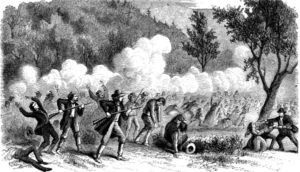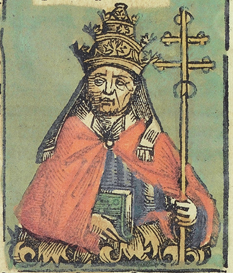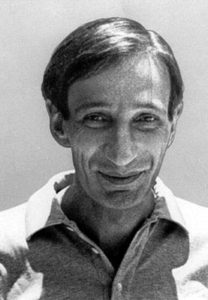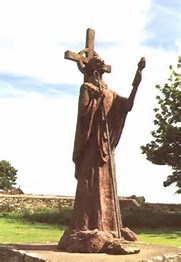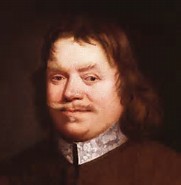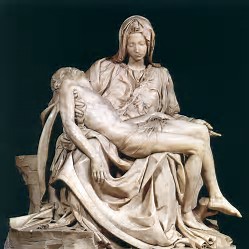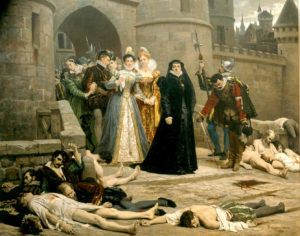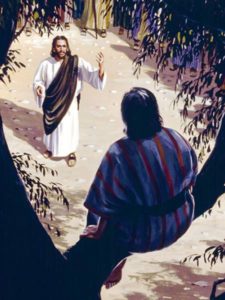590 Consecration of Gregory the Great. One of only two popes to be given such a nickname (though fans of John Paul II are using the term), Gregory came from an aristocratic family in Rome and achieved at an early age the rank of Prefect of the city. He abandoned secular life to become a monk in 574 but was sufficiently well regarded by the authorities to be sent as an ambassador to the imperial court in Byzantium and to be named chief advisor to Pope Pelagius II, whom he succeeded on his death in 590. He is best known for sending Augustine of Canterbury to convert the Angles of Britain, extensive theological writings, aid to the poor, protection of the Jews and bolstering the power of the papacy.
1658 Death of Oliver Cromwell, Lord Protector of England. The title of “History’s Most Controversial Englishman” is surely held by Oliver Cromwell (1599-1658), landowner, Protestant dissident, Member of Parliament, rebel general, Lord Protector of England. For some of the Left, he is a champion of liberty; to others on the Left, he nipped freedom in the bud; to the Irish, he was a genocidal murderer; the Right, he was a regicide usurper.
Cromwell was born in Huntingdonshire in eastern England to a family of landed gentry. He was well-educated but left Cambridge University without taking a degree. His family connections enabled him to sit as a Member of Parliament but he remained obscure into his middle age. He seems to have become a Protestant of the Puritan variety and opposed the religious policies of King Charles I. In the early 1640s when the king quarrelled with Parliament, Cromwell took the side of the latter, demanding reforms and a lessening of royal prerogative power.
In 1642 the English Civil War broke out and Cromwell raised a troop of cavalry to fight on the side of Parliament. He rose rapidly to become one of the principal rebel generals, despite accusations that he favoured low-born men and religious radicals. In 1645 his cavalry smashed the royalist army at the Battle of Naseby, leading to the capture of the king and an end to the first phase of the war. When Charles escaped in 1648 and restarted the conflict, Cromwell was instrumental in defeating royal forces.
In 1649 Charles was placed on trial by Parliament and sentenced to be executed, with Cromwell as one of the “Regicides”, those signing the death warrant. Parliament then declared an English republic, known as the Commonwealth, and its government commissioned Cromwell to take an army to Ireland and crush any opposition there. He did so from 1649 to 1651 with such ferocity that his name remains hated in the country to this day. Catholic landowners were dispossessed and the practice of the Catholic religion was banned.
The “Rump Parliament” that was sitting in 1653 had irritated many with its indecision and lack of legitimacy. It had been elected in 1642 and had been purged of any MPs who might have opposed the execution of Charles. Cromwell took it upon himself, backed by other army officers, to dissolve the body. He entered the House of Commons in force and cried “You have sat too long for any good you have been doing lately … Depart, I say; and let us have done with you. In the name of God, go!” His intense Puritanism led him to believe that a new governing body should be drawn only from those of proven godliness and thus the “Parliament of Saints” (or “Barebones” Parliament) was formed. Its radicalism caused upset and division and it lasted only until the end of the year when it was dissolved and Cromwell was chosen as Lord Protector.
Cromwell had some notion of religious liberty but valued social stability above all else. He quelled Catholics in Ireland but allowed Catholicism in the Maryland colony; he supported the abolition of the Church of England and the episcopacy but crushed radical sects; he allowed Jews to settle in England for the first time since the 13th century. He wished a form of Puritanism to be followed but feared the imposition of a dominant Presbyterian structure such as existed in Scotland. As he told the Scottish Church “Is it therefore infallibly agreeable to the Word of God, all that you say? I beseech you, in the bowels of Christ, think it possible you might be mistaken.”
Cromwell died in 1658, succeeded as Protector by his son Richard who was not up to the job. By 1660 the monarchy was restored and Cromwell was put on trial posthumously with his remains disinterred. His head was stuck on a pole for a generation in London.
1803 Birth of Prudence Crandall, American Quaker and educator. In 1832 Crandall, proprietor of a Canterbury, Connecticut girls’ school, admitted an African American student. When white parents withdrew their children Crandall continued her school teaching only “young ladies and little misses of color”. The community responded with violence and ostracism and Crandall was arrested. Furious at her eventual acquittal, townsfolk burned down her school, forcing its closure and Crandall’s move out of state. Many years later Connecticut repented and granted her a pension in her old age. In 1995 the Connecticut legislature designated Prudence Crandall as the state’s official heroine.

